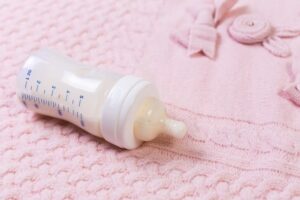Glycolic Acid: Tips to Achieving Perfect Skin Using Glycolic Acid Products
Glycolic acid comes under the category of alpha hydroxy acid alongside lactic acid, citric acid, and malic acid. Glycolic acid is derived from sugarcane juice but is also present in apples and other citrus fruits besides yogurt and vinegar. Glycolic acid is very beneficial for your skin. It is an exfoliant which breaks the tightly bonded dead cells of the outermost layer of the skin known as the stratum corneum. This results in the sloughing of the layer of dead cells, thereby revealing smoother, healthier, and brighter skin. There are many other skincare benefits of glycolic acid. The molecular weight of glycolic acid is very small which allows it to penetrate deep inside the skin.
There are multiple benefits of Glycolic Acid Toner, peel, cream, and other kinds of glycolic acid skincare products.
• Acne
Acne is caused by clogging of the skin pores by bacteria, dirt, oil, and dead cells. The anti-bacterial action of glycolic acid removes the infection which prevents breakouts. Glycolic acid also reduces the excess oil and dead cells present in the pores, thereby eliminating acne. Pore size is also reduced by glycolic acid. Pimples, whiteheads, and blackheads are all removed by applying glycolic acid products.
• Anti-Aging
Fine lines and wrinkles are formed on the skin when the level of collagen fibers diminishes. The skin also becomes sagged in appearance. Collagen is a fibrous protein that keeps the skin firm. Glycolic acid increases the amount of collagen in the skin and eliminates the signs of aging.
• Hyperpigmentation
Hyperpigmentation refers to the appearance of discolored or dark spots on the skin caused by sun, acne, and age. Glycolic acid eliminates these spots and makes the skin tone even by improving the date of regeneration of skin cells.
• Humectant
Glycolic acid absorbs moisture from the air and keeps it preserved inside the skin. This is the reason why moisturizers containing glycolic acid in low quantities are widely recommended to maintain skin in a hydrated state.
• Rosacea
Rosacea is a condition in which the skin appears flushed red. Blood vessels also become conspicuous. A stinging and irritating sensation is felt on the skin. Glycolic acid exerts anti-inflammatory effects which reduce the severity of rosacea.
• Milia
Milia are small white outgrowth which erupts under the skin. These are made of hardened keratin. Glycolic Acid Toner is very effective in treating milia. This is because glycolic acid causes the hardened keratin to rise up to the surface by removing dead cells and regenerating cells. The keratin can then be easily removed.
Strength to Choose
The concentration of glycolic acid in the Glycolic Acid Toner is mentioned on the package. Low concentration glycolic acid toner is recommended for first-time users and for people with normal or combination skin. Highly concentrated glycolic acid toners of 30% or more concentration are suitable for people with oily or acne-prone skins.
Glycolic acid peels available in the market are suitable for all skin types. They come in different strengths such as mild, moderate, and high. People with dark skin tone should opt for mild or moderate glycolic acid peels. Mild strength glycolic acid peels are suitable for people with sensitive skin.
It is better to start with a low concentration glycolic acid skincare product and then gradually upgrade to a higher concentration product as the skin develops tolerance.
Frequency of Usage
The frequency of usage of glycolic acid-based skin products depends upon skin type, age, and level of sensitivity of the skin. Cleanser having a low percentage of glycolic acid can be applied everyday. A glycolic acid cream or peel having a higher concentration of glycolic acid such as 20-30%, on the other hand, should be applied once every few months.
Skin Type
Glycolic acid skin care products are suitable for normal, combination, and oily skin. People having dry or extremely sensitive skin should avoid glycolic acid because of the risk of reaction and skin irritation. If your skin is broken, wait until it is healed before applying a glycolic acid product.





